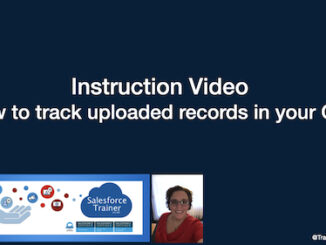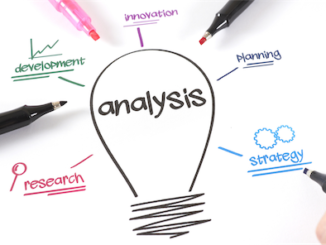Implementing Salesforce is a significant step toward streamlining your organization’s processes, enhancing customer relationships, and boosting productivity. However, the true potential of this powerful CRM platform can only be unlocked when your team is well-trained and proficient in using it. To achieve this, it’s essential to create a comprehensive training plan that addresses the unique needs of your organization. In this blog, we will explore the elements of a robust training plan, how to create a timeline and set training goals, ways to integrate various training methods and resources, and tips for tailoring the plan to your organization’s specific needs.
Elements of a Robust Training Plan
A robust training plan is more than just a checklist of topics to cover. It’s a strategic roadmap that ensures your team becomes proficient Salesforce users. Here are the key elements to include:
- Clear Objectives and Goals
Start by defining clear objectives and goals for your training plan. What do you want to achieve with Salesforce? Is it improving lead management, enhancing customer support, or increasing sales team efficiency? Or are you going through a Salesforce implementation and replacing old systems? Align your training goals with your organization’s broader objectives. - Target Audience Identification
Identify the specific roles and departments that will use Salesforce. Different teams may require different training paths. For instance, your sales team’s training needs may differ from those of your customer support team. Identify if there are regional differences including if there are differences in delivery form (e.g. Face to Face vs e-learning etc). If you have teams spread across the world, how do you want to tackle language differences. Will all training be in English, or is local language required? - Training Needs Assessment (TNA)
In the next blog, I will explain why conducting a Training Needs Analysis (TNA) is crucial. It helps pinpoint the skills and knowledge gaps that need to be addressed through training. As part of the TNA also conduct an analysis on your training team. Do you have all the skills and sufficient experts in house to create and deliver the training? Or will you need to look for Salesforce Training Professionals to support content creation and delivery? - Delivery Methods
Determine how you’ll deliver the training content. Options include in-person workshops, virtual training sessions, e-learning platforms, mentorship programs, and a combination of these. Consider the preferences and availability of your audience. - Content Development
Create training materials that align with your objectives and the identified needs. These materials can include documentation, video tutorials, interactive modules, and more. Make sure the content is easy to understand and relevant to the audience. In content development ensure there is time for peer-to-peer review, testing by a small group of users and stakeholder sign off. If translations to local languages are included, make sure sufficient time is provided. - Assessment and Evaluation
Include methods to assess the effectiveness of the training. This can involve quizzes, hands-on exercises, and feedback surveys. Regularly evaluate the progress of participants to make necessary adjustments to the training plan. - Feedback Mechanism
Establish a feedback mechanism that allows participants to provide input and ask questions. This promotes engagement and ensures that the training remains relevant. - Certification and Recognition
Consider offering certifications or recognition for completing the training successfully. This can motivate participants and demonstrate their proficiency in Salesforce.
Creating a Timeline and Setting Training Goals
Setting a Timeline
Creating a timeline for your Salesforce training plan is essential for keeping the process on track.
Consider the following when setting a timeline:

- Start Early: Begin planning well in advance of your Salesforce implementation or major updates. Training should not be rushed.
- Phased Approach: Break the training plan into phases, starting with core functionalities and expanding to advanced features.
- Scheduling: Schedule training sessions at times that are convenient for your team, minimizing disruptions to their regular work.
- As example for training development, a full day face to face training session that includes hands on exercises, training guides and training presentation will take approx. 15 days to create, test and complete.
A 3 minute video to support your training, will take about half a day to create and develop.
Setting Training Goals
Training goals should be specific, measurable, achievable, relevant, and time-bound (SMART). Here’s how to set them effectively:
- Specific: Clearly define what participants should learn or achieve through training. For example, “Increase lead conversion rates by 20% through improved lead management in Salesforce.”
- Measurable: Identify how you will measure success. This could be through metrics like increased sales, reduced support ticket resolution times, or improved customer satisfaction scores.
- Achievable: Ensure that the goals are realistic and attainable within the given timeline and resources.
- Relevant: Align the goals with your organization’s broader objectives and the specific needs identified in the TNA.
- Time-Bound: Set a specific timeframe for achieving each training goal. For example, “Achieve a 10% increase in sales within three months of Salesforce training.”
Integrating Various Training Methods and Resources
To create a well-rounded training plan, consider integrating various training methods and resources:
- In-Person Workshops
In-person workshops provide hands-on experience and allow for immediate interaction and feedback. They are ideal for introducing core concepts and building a strong foundation. Especially when you are going through a Salesforce Implementation with lots of change for your teams, in-person workshops will help gaining understanding and strengthen the training delivery. - Virtual Training
Virtual training sessions are convenient for remote teams or when in-person training isn’t feasible. These sessions can be conducted live with trainers or delivered asynchronously through recorded content. - E-Learning Platforms
Leverage e-learning platforms like Salesforce Trailhead, which offers a wide range of modules and trails for different user roles and skill levels. These platforms allow self-paced learning and often provide badges or certifications upon completion. Trailhead is mostly geared towards those users who really want to get deep understanding, ideally your super / power users and your training team. You can use your own intranet / business platforms to create a dedicated training platform for people to sign up and consume training. - Mentorship Programs
Pair experienced Salesforce users with beginners for one-on-one mentorship. This can be particularly effective for personalized guidance and support. If you have some very strong users in your organisation, consider expending their role to become super users. Your Salesforce Admin and Developer team will appreciate the shared responsibility of training and guiding users. - Documentation and Knowledge Bases
Create comprehensive documentation and knowledge bases that users can refer to as they work in Salesforce. Include step-by-step guides, FAQs, and troubleshooting resources.
Tips for Tailoring the Plan to Your Organization’s Specific Needs
Tailoring your training plan to your organization’s unique needs is crucial for success. Here are some tips to achieve this:
- Customized Content
Ensure that your training materials and sessions are customized to address the specific challenges and objectives of your organization. Generic content may not resonate with your team. Your training should be infused with your business language and processes so your users will understand how the training will impact their day to day work. - Role-Based Training
Different roles within your organization may require different training paths. Tailor the training to the specific needs and responsibilities of each role. Break your training materials down in bitesize modules and provided users clear guidance on which modules they need to go through for their role. - Feedback and Iteration
Regularly collect feedback from participants and use it to iterate on your training plan. Adjust the content, delivery methods, and goals based on user input. - Flexibility
Be flexible in adapting your training plan as your organization evolves. New hires, changing business processes, and Salesforce updates may necessitate adjustments to the plan. - Continuous Learning
Promote a culture of continuous learning within your organization. Encourage users to explore advanced Salesforce features and stay updated on industry best practices.
In conclusion, building a comprehensive training plan for Salesforce is not just about teaching users how to use the platform; it’s about empowering them to excel in their roles and contribute to the success of your organization. By including the essential elements, setting SMART goals, integrating various training methods, and tailoring the plan to your organization’s specific needs, you can ensure that your team becomes proficient and confident Salesforce users, driving business growth and efficiency.
Remember, training is an ongoing process, and continuous improvement is key to staying ahead in the Salesforce ecosystem.
The series:
- Blog 1: “Building a Comprehensive Training Plan for Salesforce”
- Blog 2: “The Significance of a Training Needs Analysis (TNA)”
- Blog 3: “Securing Executive Buy-In for Salesforce Training”
- Blog 4: “Embracing Change Management in Salesforce Training”
- Blog 5: “Comparing Training Solutions: Face-to-Face vs. Video vs. E-Learning”
- Blog 6: “Effective Training Delivery: Tips and Best Practices”
- Blog 7: “Leveraging Gamification for Salesforce Training Success”
- Blog 8: “The Role of Continuous Learning in Salesforce Success”
- Blog 9: “Overcoming Common Salesforce Adoption Challenges”
- Blog 10: “Future Trends in Salesforce Training and User Adoption”




Be the first to comment